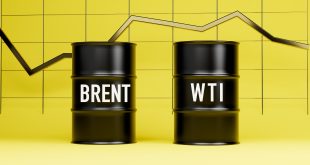The technology sector just witnessed a striking development as Dell Technologies’ shares surged to a new high, a direct response to the company nearly doubling its long-term financial guidance. This dramatic revision, which sees projected annual revenue growth jump from a modest 3%-4% to a robust 7%-9%, and annual earnings per share growth elevated to 15% or more from 8%, is a clear signal that the Artificial Intelligence revolution is reshaping corporate fortunes in real-time. The core driver is not the traditional personal computer segment, but the insatiable demand for data center infrastructure—the sophisticated compute, storage, and networking systems essential for training and running complex AI models.
The Infrastructure Power Play
Dell’s massive re-rating is a stark illustration of where the real spending power in the AI economy currently resides: hardware infrastructure. The company’s servers and networking business has already seen explosive growth, posting a 69% year-over-year jump in its recent second-quarter earnings. This unprecedented demand has translated into a backlog that is fueling aggressive future projections, including a plan to ship a colossal $20 billion worth of AI servers in the upcoming fiscal year.
This is a structural shift, not a temporary spike. As Michael Dell, the company’s founder and Chief Executive Officer, noted, “Customers are hungry for AI and the compute, storage and networking we provide to deploy intelligence at scale.” This hunger is coming from a diverse client base, including hyperscale entities like xAI and OpenAI, as well as critical government contracts, such as powering the U.S. Department of Energy’s next supercomputer. The implication is that the fundamental building blocks of AI—the ‘intelligence factories’—are now the most valuable commodity in the digital economy.
The Critical Constraints on AI Boom
Despite the intoxicating financial forecasts, a provocative question hangs over this AI-fueled rally: How sustainable is this concentration of infrastructure power?
The immediate challenge for the entire technology ecosystem, a point acknowledged by Mr. Dell himself, is not demand, but the fundamental constraints of physical infrastructure, specifically energy. The deployment of these massive AI data centers is reaching a scale where the primary bottleneck is not the delivery of servers, but securing the necessary electrical power to operate them. This issue of energy supply—the ability of grids to support the gargantuan power draw of AI compute—poses a tangible hurdle to the expected growth trajectory. While tech companies are innovating with liquid cooling and other efficiency measures, the macro constraint on power generation and distribution is a problem that requires large-scale public and private coordination.
What’s Catalyzing AI Investment?
The soaring performance of companies central to the AI build-out, such as the major hardware providers and their semiconductor partners, reflects a market certainty about the long-term role of this technology. This environment demands a nuanced perspective from those participating in the financial markets. The optimism surrounding the infrastructure providers is well-founded in near-term order books and dramatically boosted guidance. However, investors and traders must recognize that the ultimate success of this infrastructure depends on the sustained, profitable use of AI by end-users—a factor still being tested.
It is paramount for all participants to adhere to a reasonable level of caution and maintain a commitment to being fully informed about the wider economic and infrastructural risks. While the Federal Reserve, led by its Chair and various Governors, is focused on navigating inflation and growth, the technology sector’s capital expenditures and energy demands are creating new, complex variables for the broader economy. The exponential demand for compute power is a clear trend, but the path from infrastructure deployment to realized global productivity gains is not a straight line. The market’s excitement is undeniable, but it is the informed, cautious approach that will ultimately lead to robust participation in this new industrial revolution.

 Noor Trends News, Technical Analysis, Educational Tools and Recommendations
Noor Trends News, Technical Analysis, Educational Tools and Recommendations




